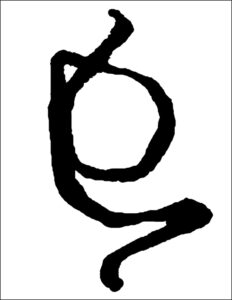by James A. Bacon
The man who would come to be known by the English name of Anthony Johnson was born in the Angola region of southern Africa, enslaved by the Portuguese, and transported to Virginia for sale. There he was sold to a colonist, and then resold to a merchant planter by the name of Edward Bennet around the year 1622. None of the American colonies had yet legalized slavery — Massachusetts would be the first in 1641; Virginia would not follow until 1661 — and the only legal framework for bondage was indentured servitude. Accordingly, Johnson entered his service to Bennet as an indentured servant.
Bennet sent some 50 servants, including Johnson, to a point on the James River to clear grounds for a tobacco plantation. The following month, the party was attacked by the Powhatan Confederacy headed by Chief Opechancanough, who was bent upon exterminating and expelling the English colonists. Johnson was one of only a handful of survivors. After that harrowing episode, he proceeded to serve out his term as a servant and was given his freedom. As was standard practice at the time, he was given tools and allotted land. He settled along the Pungoteague River on Virginia’s Eastern Shore.
An enterprising man, Bennet took advantage of the so-called “headrights” system, in which anyone who imported labor to the colony was granted 50 acres per head. By acquiring a dozen or more servants — some English, some of African origin — he built an estate of more than 1,000 acres, which he named Angola. Thus, Johnson was one of the only — perhaps the only — documented instance in history of an African who became the master of White Englishmen in the American colonies.
Johnson’s story is well known to historians of the early colonial era. I came across it in the book, White Cargo, a history of indentured servitude, and there is a detailed entry about Johnson in Wikipedia. The tale does not fit the America-born-with-the-sin-of-slavery interpretation of the 1619 Project. History is complicated. It defies simplistic oppression narratives. While Africans may have arrived in Virginia in 1619, slavery did not.
Ironically, Johnson played a not-insignificant role in the legal evolution of indentured servitude into Black slavery. Johnson had a Black African servant with the English name of John Casor who ran away sometime in the 1650s and sought the protection of a neighboring (White) planter. Casor went to court arguing that he had served out the full term of his servitude, but Johnson counter-claimed that Casor was a servant for life. After two years of drama, the Northampton County Court ruled that Casor was indeed Johnson’s property, commanded that he be returned, and ordered Johnson to be compensated for lost labor. Twenty years later, Casor still was recorded as the property of Johnson’s African-born widow, Mary Johnson.
The institution of slavery took decades to evolve into the inherited, race-based system that Americans commonly think of as slavery. It wasn’t until 1671 that Virginia made all “non-Christian servants” newly-shipped into the colony slaves for life. (Remember, at this time, Muslim Africans along the Barbary Coast were routinely enslaving European Christians, mainly in the Mediterranean.) Two years later, the legislature validated the enslavement of Indians. Additional laws were passed piecemeal, but the system was not formalized until enactment of Virginia’s first slave code in 1705.
Throughout most of the 1600s, Virginia planters relied more heavily upon the indentured labor of English, Irish, Welsh and Scottish servants than of Africans. Many White servants indentured themselves voluntarily in exchange for trans-Atlantic passage and the promise of land at the end of their term, but many were convicts, prisoners of war, or kidnaped from the streets of English port cities, and they were transported to the colonies against their will. As the authors of “White Cargo” argue, their condition was indistinguishable from that of Black slaves. They were frequently beaten and starved; their new-born children were indentured until they reached the age of 21; they often ran away, and when they were recaptured, given extended terms of servitude. Indeed their condition was often worse. Some plantation owners were determined to eke the maximum profit from their servants before their terms expired. Half or more died in servitude. By contrast, plantation owners had an incentive to keep their Black slave property alive and healthy.
The 1600s were an ugly period of history. The world was dominated by empires and kingdoms in which a few rulers presided over systems of hierarchy and servitude, and reigning religions and ideologies justified their rule. One can view the history of the United States in isolation as a never-ending succession of cruelties and injustices unto the present day, oblivious to the fact that the history of every people was characterized by cruelties and injustices. Or one can approach American history with the question: how did we get from Point A (universal hierarchy and oppression) in 1607 to Point B (a democratic republic guided by the principles, if not always the practice, of liberty, equality and universal justice)?
I adopt the latter view. As time permits, I will explore in future posts the theme of hierarchy and servitude through Virginia history.



